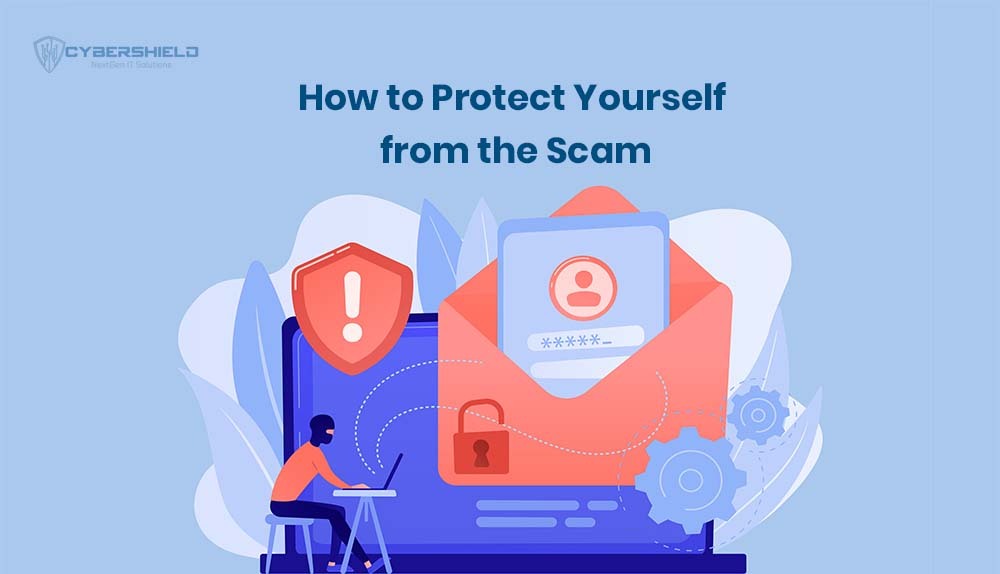Understanding these risks is critical in today’s cyber threat landscape, whether you are an individual user or a firm that uses Managed Security Services for Small firm.
What Is the Microsoft Account Team Email Scam?
The Microsoft Account Team email scam 2025 is a clever phishing effort that masquerades as an official Microsoft communication. These bogus emails frequently alert recipients about suspicious login activity, password expiry, or account suspension. The idea is simple: mislead people into clicking malicious links and disclosing their login information.
How the Scam Works
- You receive an email claiming to be from the “Microsoft Account Team.”
- The email suggests urgent action, such as verifying a login attempt or resetting your password.
- Embedded links direct you to a fake Microsoft login page designed to harvest credentials.
- Once you enter your username and password, attackers gain immediate access to your account.
Red Flags to Watch Out For
-
Suspicious sender addresses:
One of the simplest giveaways is the email address itself. While the display name may imply Microsoft Account Team, the sender’s address may be from a weird domain, such as support@micr0soft-login.com rather than @microsoft.com. Cyber criminals frequently substitute characters (such as “0” for “o”) or add extra words to deceive rapid readers.
-
Poor grammar or unusual formatting:
Microsoft invests heavily in polished communication, so grammatical mistakes, typos, or odd sentence structures should raise red flags. Similarly, formatting inconsistencies—such as mismatched fonts, oversized buttons, or strange color schemes—signal that the email may not be authentic.
-
Links leading to fake login pages:
The most dangerous element of these scams is the link. By hovering your cursor over the hyperlink (without clicking), you can preview the destination. If it doesn’t clearly point to an official Microsoft domain, it’s a phishing trap. Many fraudulent URLs contain extra characters, random strings, or end in unusual extensions.
-
Requests for personal or financial information:
Microsoft will never request sensitive information, such as passwords, Social Security numbers, or credit card information, over email. Any message that prompts you to “verify your identity” or “confirm your billing details” via a link is almost definitely false.
How to Protect Yourself from the Scam
Protecting yourself from the Microsoft Account Team email scam in 2025 requires a mix of awareness, smart habits, and the right security tools. Here are some best practices for both individuals and businesses:

-
Enable Multi-Factor Authentication (MFA)
MFA continues to be one of the most effective anti-phishing strategies. Even if fraudsters manage to obtain your password, they will be unable to access your account without the second tier of authentication, such as a cellphone number or biometric verification. For enterprises, using MFA across all employee accounts greatly minimizes the danger of account takeover.
-
Verify email sources before clicking
Always take a few seconds to hover over sender addresses and embedded links. A genuine Microsoft communication will come from a legitimate domain such as @microsoft.com or @outlook.com. Anything else, even if it looks almost identical, is a red flag. Pausing before clicking is often enough to spot a scam.
-
Report suspicious emails to Microsoft
Don’t just delete phishing attempts. Forward them to reportphishing@microsoft.com. Doing so helps Microsoft track and shut down large-scale scams more quickly, reducing the number of potential victims. For organizations, encouraging employees to report suspicious emails internally also strengthens overall security awareness.
-
Use email security filters
Advanced email filtering systems are particularly important for organizations. A Managed IT Shield Provider may assist with deploying systems that automatically detect and stop phishing attempts before they reach inboxes.
Working with a Managed Security Services provider, such as Cybershield IT, provides small businesses with enterprise-grade protection without the cost of establishing an in-house security staff.
Risks of Falling Victim
- Account takeover and identity theft: Attackers can access Outlook, OneDrive, and even Azure accounts, stealing both personal and professional data.
- Financial loss and fraud: Stolen credentials can lead to unauthorized purchases, wire fraud, or fraudulent use of stored payment details.
- Business security breaches: For organizations, compromised accounts open the door to ransomware attacks, insider threats, and data breaches in finance or other regulated industries.
The Microsoft Account Team email scam in 2025 is more dangerous than ever, fueled by AI-driven tactics and global targeting. But awareness, vigilance, and proactive security measures remain the strongest defense.
Working with trusted partners, such as Managed IT Service providers, individuals, and businesses, can stay ahead in an evolving cyber threat landscape.
Cybershield IT helps companies improve their defenses by providing Managed Security Services for Small Business, sophisticated monitoring, and actionable cybersecurity metrics to prevent events from escalating.




